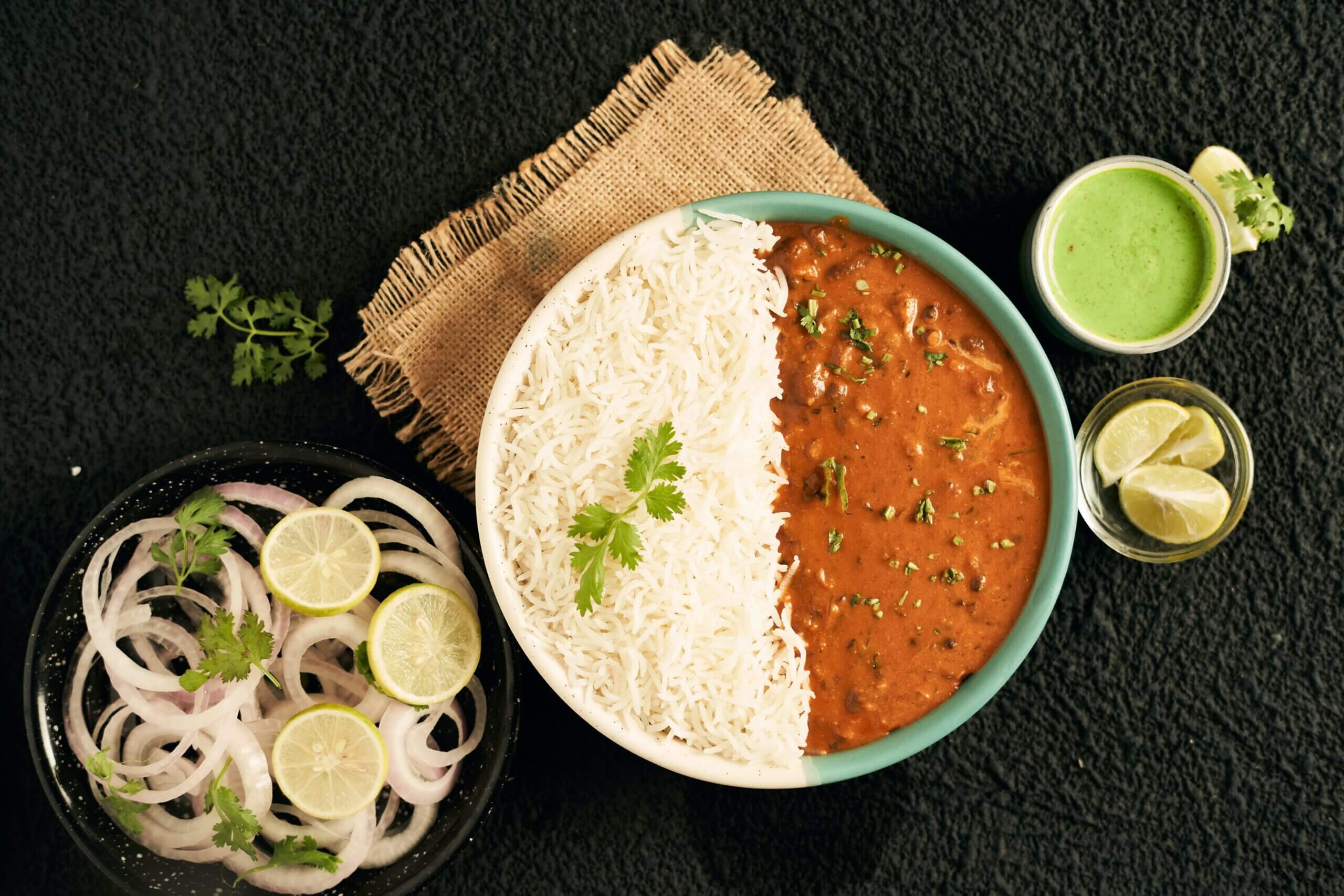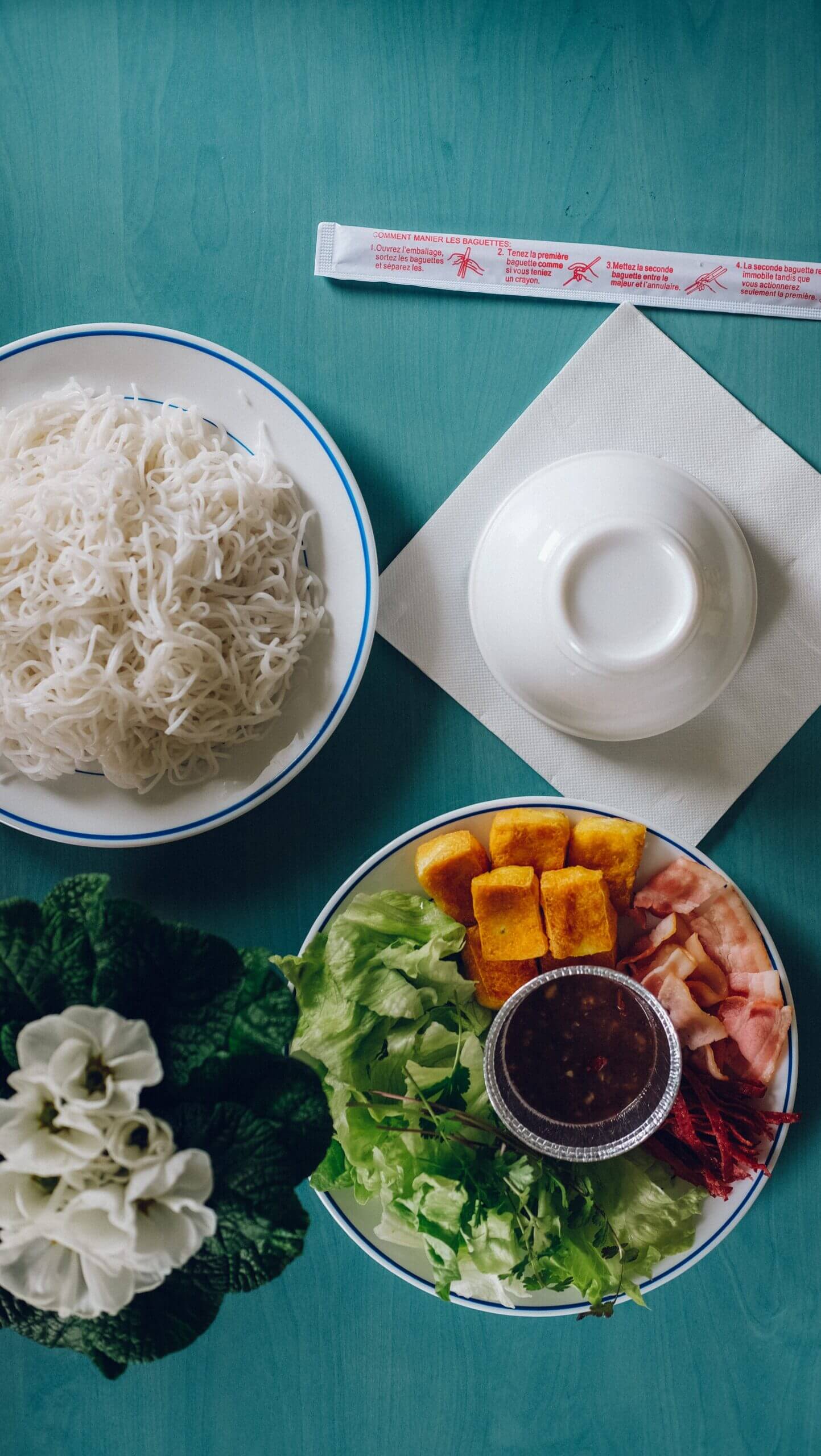white rice is indeed a staple food for billions of people worldwide, cherished for its versatility, affordability, and nutritional benefits. However, the question arises: is it advisable to eat rice every day? Let’s examine this query in detail to understand the potential effects of daily rice consumption on our health and overall well-being.
Rice is a rich source of carbohydrates, providing energy essential for our daily activities. Additionally, it contains small amounts of protein and fiber, along with essential minerals such as iron and magnesium. Its low-fat content also makes it an attractive option for those seeking a balanced diet.
Despite its nutritional value, consuming rice every day may have some drawbacks. Rice, particularly white rice, has a high glycemic index, which means it can cause spikes in blood sugar levels. This could be problematic for individuals with diabetes or insulin resistance.
Furthermore, some concerns have been raised about arsenic levels in rice, particularly in regions where it’s grown in arsenic-rich soil. Long-term exposure to high levels of arsenic may pose health risks, although the impact of typical rice consumption on health is still being studied.

However, it’s essential to note that the negative effects of rice consumption are largely dependent on quantity and variety. Eating moderate amounts of rice as part of a balanced diet is unlikely to cause harm. It’s also crucial to opt for whole grain varieties like brown rice, which retain more nutrients and fiber compared to refined white rice.
In conclusion, while eating rice every day can be a part of a healthy diet for many individuals, it’s essential to consider portion sizes, opt for whole grain varieties, and balance rice consumption with other nutritious foods. By doing so, you can enjoy the benefits of rice while minimizing any potential risks to your health.
Contents
- 1 Nutritional Value of white rice
- 2 Expert Opinion: Variety in Diet
- 3 Benefits of Eating white rice Daily
- 4 Potential Drawbacks of Daily Rice Consumption
- 5 Balancing white rice with Other Foods
- 6 Cultural Significance of Rice
- 7 Practical Tips for Healthy Rice Consumption
- 8 Scientific Studies on Rice Consumption
- 9 conclusion
- 10 FAQ
Nutritional Value of white rice
Rice is a versatile and nutritious grain that forms a staple food for many cultures around the world. Here’s a more detailed breakdown of its nutritional value:
Macronutrients:
- Carbohydrates: Rice is primarily a carbohydrate source, offering around 28 grams per 100-gram serving. This provides readily available energy for your body’s various functions. However, the type of rice you choose can impact the quality of these carbs. White rice, for example, is mainly starch and has a higher glycemic index, meaning it can cause blood sugar spikes. Brown rice, on the other hand, contains more fiber and complex carbohydrates, leading to a more gradual rise in blood sugar.
- Protein: Rice provides a moderate amount of protein, around 3 grams per serving. While not a complete protein source lacking all essential amino acids, it can contribute to your daily protein needs, especially when combined with other protein-rich foods.
- Fat: Rice is naturally low in fat, containing only around 0.2 grams per serving. This makes it a good choice for those looking to manage their fat intake.
Micronutrients:
- Fiber: Depending on the type, rice can offer a decent amount of fiber, ranging from 1 gram in white rice to 3.5 grams in brown rice. Fiber is crucial for digestion, gut health, and managing blood sugar levels.
- Minerals: Rice is a good source of several essential minerals, including:
- Iron: Important for oxygen transport and red blood cell production.
- Magnesium: Plays a role in muscle and nerve function, blood sugar control, and energy production.
- Manganese: Essential for bone health, metabolism, and antioxidant function.
- Vitamins: While not a significant vitamin source, rice does contain small amounts of B vitamins, including thiamine and niacin, which are important for energy metabolism and nervous system function.
Rice can be a nutritious part of a balanced diet, especially when choosing whole-grain varieties like brown rice or other pigmented rice types. These offer more fiber, vitamins, minerals, and antioxidants compared to white rice. Remember to pair rice with other nutrient-rich foods like vegetables, protein sources, and healthy fats for a well-rounded meal.
Expert Opinion: Variety in Diet
The importance of incorporating various food groups for complete nutrition. Here are some additional points to consider:
1. Rice is not created equal: While the statement about including rice in a varied meal plan is accurate, it’s important to highlight the difference between various rice varieties. Whole-grain options like brown, black, and red rice offer more fiber, vitamins, and minerals compared to white rice, which undergoes processing and loses much of its nutritional value.
2. Moderation is key: Regardless of the rice variety, moderation is essential. Rice, even whole-grain options, are primarily carbohydrates, and overconsumption can lead to issues like blood sugar spikes.
3. Combine with diverse protein and healthy fats: As you mentioned, rice should be accompanied by other food groups. Pairing it with lean protein sources like chicken, fish, or legumes, and healthy fats like avocado or nuts, creates a more balanced and satiating meal.
4. Consider individual needs: Dietary needs vary based on age, health conditions, and activity levels. For individuals with specific needs, consulting a registered dietitian can help personalize a rice intake plan within a balanced diet.
5. Explore alternatives: For further dietary diversity, consider exploring alternatives like quinoa, barley, or other whole grains that offer different nutrient profiles and textures.
Benefits of Eating white rice Daily
Rice offers potential benefits such as being an energy source, gluten-free, and promoting fullness due to its fiber content. However, it is important to consider the potential downsides and moderation when incorporating rice into your diet. Whole-grain rice varieties like brown, red, or black are recommended due to their higher fiber, vitamins, and minerals. Overconsumption of rice can lead to weight gain and health issues. Individual needs should also be considered, and a registered dietitian can provide personalized advice.
- Energy source: Rice is a good source of complex carbohydrates, which are broken down slowly, providing sustained energy throughout the day. This can be beneficial for people with active lifestyles.
- Gluten-free: As you mentioned, rice is naturally gluten-free, making it a suitable option for individuals with celiac disease or gluten sensitivities.
- Satiety: Rice can promote feelings of fullness due to its fiber content, especially in brown rice compared to white rice. This can aid in weight management by helping you feel satisfied and potentially eat less overall.
Potential Drawbacks of Daily Rice Consumption
- Blood sugar impact: As you mentioned, rice is high in carbohydrates, which can affect blood sugar levels. This is especially concerning for individuals with diabetes, prediabetes, or metabolic syndrome. Choosing low-glycemic index (GI) rice varieties like basmati or jasmine brown rice can help mitigate this issue.
- Arsenic content: Some rice varieties can accumulate arsenic, a naturally occurring metalloid linked to various health problems like cancer and cardiovascular issues. Opting for brown rice over white rice can reduce arsenic intake, as bran layers absorb less arsenic.
- Nutrient deficiencies: Relying solely on rice for carbohydrates may lead to deficiencies in other essential nutrients. Ensure a balanced diet rich in fruits, vegetables, protein sources, and healthy fats to meet your complete nutritional needs.
- Digestive issues: Excessive rice consumption can cause digestive problems like bloating, constipation, or diarrhea in some individuals, especially due to the fiber content in brown rice.
- Potential for overconsumption: Rice is a calorie-dense food, and overconsumption can contribute to weight gain and related health issues. Mindful portion control and pairing rice with other food groups are crucial for managing calorie intake.
- Moderation and variety are key. While rice can be part of a healthy diet, consuming it daily with no variation might not be optimal. Explore other whole grains like quinoa, barley, or oats for added diversity and potentially better nutritional profiles. It’s always best to consult a registered dietitian or healthcare professional for personalized advice based on your individual needs and health conditions.
Balancing white rice with Other Foods
1. Protein Power: As you mentioned, protein plays a key role in stabilizing blood sugar and keeping you feeling full for longer. Consider pairing rice with:
- Lean meats: Chicken, fish, turkey, or plant-based alternatives like tofu or tempeh.
- Legumes: Lentils, beans, peas, or chickpeas. These also add fiber and essential nutrients.
- Eggs: A versatile protein source for breakfast, lunch, or dinner.
2. Vegetable Fiesta: Non-starchy vegetables are packed with vitamins, minerals, and fiber, adding essential nutrients and aiding digestion. Choose a variety of:
- Leafy greens: Spinach, kale, or Swiss chard.
- Cruciferous vegetables: Broccoli, cauliflower, or Brussels sprouts.
- Colorful vegetables: Bell peppers, carrots, eggplant, or tomatoes.
3. Healthy Fat Focus: Including healthy fats helps with satiety, nutrient absorption, and overall heart health. Explore:
- Avocados: Rich in monounsaturated fats and fiber.
- Nuts and seeds: Almonds, walnuts, chia seeds, or flaxseeds.
- Olive oil: Drizzle for flavor and heart-healthy benefits.
4. Portion Control: Moderation is key. Use tools like measuring cups to control rice portions and prioritize non-starchy vegetables and protein on your plate.
5. Cooking Methods: Choose healthy cooking methods like steaming, baking, or stir-frying to limit added fat and preserve nutrients.

Don’t limit yourself to just white rice! Explore other whole grains like brown rice, quinoa, barley, or oats for increased fiber, vitamins, and minerals. Each grain offers unique textures and flavors. Individual needs vary. Consult a registered dietitian for personalized guidance on balancing rice with other foods and creating a diet that works best for you and your health goals.
Cultural Significance of Rice
Rice’s cultural significance goes far beyond its role as a delicious and versatile food. Here are some additional points to consider:
Symbolism:
- Life and Prosperity: In many cultures, rice symbolizes life, fertility, and prosperity. This is evident in traditions like throwing rice at weddings or offering rice to deities.
- Community and Sharing: Rice cultivation and consumption often involve communal activities, fostering a sense of connection and shared identity.
- Hard Work and Perseverance: From paddy planting to harvesting, rice production requires dedication and patience. This resonates with many cultures, making rice a symbol of resilience and hard work.
Religious and Spiritual Influence:
- Deities and Legends: Many cultures have deities associated with rice, like Inari (Japan) and Dewi Sri (Southeast Asia), highlighting its sacred status.
- Offerings and Rituals: Rice features prominently in religious offerings and rituals, signifying gratitude, blessings, and connection to the divine.
Culinary Diversity:
- Regional Variations: Rice dishes showcase incredible diversity across regions, from sushi in Japan to paella in Spain, reflecting unique cultural identities and culinary traditions.
- Adaptation and Innovation: Rice’s adaptability allows for countless innovative dishes, reflecting cultural exchange and local preferences.
Economic and Societal Impact:
- Livelihood and Trade: Rice farming plays a crucial role in the livelihoods of millions, shaping rural economies and trade networks.
- Social Stratification: Historically, rice production and consumption have influenced social structures and hierarchies in various societies.
Looking Further:
To delve deeper, consider exploring specific cultural examples:
- Japan: The reverence for rice in Shinto traditions and intricate rice-based dishes like mochi.
- India: The significance of rice in Hindu rituals and diverse regional rice preparations like biryani.
- Latin America: The central role of rice and beans in staple dishes and social gatherings.

Practical Tips for Healthy Rice Consumption
To incorporate rice into a healthy diet, consider using whole grain options like black, red, or quinoa, sprouted brown rice, and herbs and spices for flavor. Experiment with cooked rice in salads, stir-fries, stuffed vegetables, rice pudding, or overnight oats for a satisfying breakfast. Be mindful of portion sizes and rinse rice thoroughly before cooking to remove excess starch. Allow cooked rice to cool completely before storing to prevent bacterial growth.
- Explore different whole grain rice options like black rice, red rice, or quinoa for added variety and unique textures.
- Consider using sprouted brown rice for increased digestibility and nutrient availability.
- Use herbs and spices like turmeric, cumin, or coriander to add flavor without additional sodium.
- Infuse the cooking liquid with vegetables like onions, garlic, or mushrooms for natural flavor enhancement.
- Add a squeeze of lemon or lime juice for a refreshing finishing touch.
- Experiment with using cooked rice in salads, stir-fries, or stuffed vegetables for added texture and nutrition.
- Make rice pudding or overnight oats with cooked rice for a healthy and satisfying breakfast.
- Leftover rice can be frozen and used later in quick meals or snacks.
- Be mindful of portion sizes as even whole grains can contribute to increased calorie intake if consumed in excess. Aim for a fist-sized serving per person.
- Rinse rice thoroughly before cooking to remove excess starch, which can make it sticky.
- Allow cooked rice to cool completely before storing to prevent bacterial growth.
Scientific Studies on Rice Consumption
there are many ongoing studies exploring the link between rice consumption and health. It’s important to acknowledge the complexity and nuance of this topic, as the studies’ conclusions often vary depending on several factors:
Type of Rice: Differentiating between white, brown, and other whole grain rice is crucial. Whole grain varieties generally offer more fiber, vitamins, and minerals compared to refined white rice.
Diet and Lifestyle: The effects of rice intake can be influenced by overall dietary patterns, physical activity levels, and individual health conditions.
Study Design and Methodology: Quality research practices and large sample sizes are essential for drawing reliable conclusions.
Specific Health Outcomes: Studies vary in their focus, investigating effects on specific conditions like diabetes, heart disease, or digestive health.
Here are some specific findings from recent studies to consider:
Positive Associations
- Digestive Health: Brown rice consumption has been associated with improved gut microbiome diversity and potentially reduced risk of colon cancer.
- Heart Health: Moderate whole grain rice intake might contribute to lower cholesterol levels and reduced risk of cardiovascular disease.
- Weight Management: Studies suggest that brown rice, due to its higher fiber content, can promote satiety and aid in weight management efforts.
Potential Concerns
- White Rice and Diabetes: Some studies show an association between high white rice intake and increased risk of type 2 diabetes, particularly in susceptible populations.
- Arsenic Exposure: Certain rice varieties may contain higher levels of arsenic, highlighting the importance of informed choices and dietary diversity.

conclusion
- Whether or not eating rice every day is “bad” depends heavily on your overall dietary approach and individual needs. Rice offers valuable nutrients and energy, making it a worthy food choice. However, mindful consumption and a balanced diet are crucial for maximizing its health benefits and mitigating potential drawbacks.
- By choosing whole grain varieties, practicing portion control, and pairing rice with other essential food groups, you can integrate it into your meals without compromising your health. Embrace its culinary versatility and explore various recipes to keep your dietary choices exciting and fulfilling. Remember, diversity is key!
FAQ
- 1. Is rice fattening?
- No, rice itself isn’t inherently fattening. However, overconsumption or pairing it with calorie-laden ingredients can contribute to weight gain. Opt for whole grains and manage portion sizes.
- 2. Does daily rice consumption increase diabetes risk?
- Regularly eating refined white rice may elevate type 2 diabetes risk due to its high glycemic index. Balancing rice with protein and fiber helps mitigate this risk.3. Is brown rice better than white rice?
- Generally, yes. Brown rice retains more fiber, vitamins, and minerals compared to white rice, which undergoes processing that reduces its nutritional value.
- 4. How much rice per day is recommended?
- Individual needs vary, but a general guideline suggests 1-2 servings of cooked rice per meal, maintaining moderate portion sizes.
- 5. Is rice gluten-free?
- Yes, naturally gluten-free, making it suitable for those with gluten sensitivities or celiac disease. Just be mindful of potential cross-contamination during processing or preparation.

